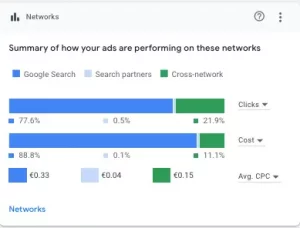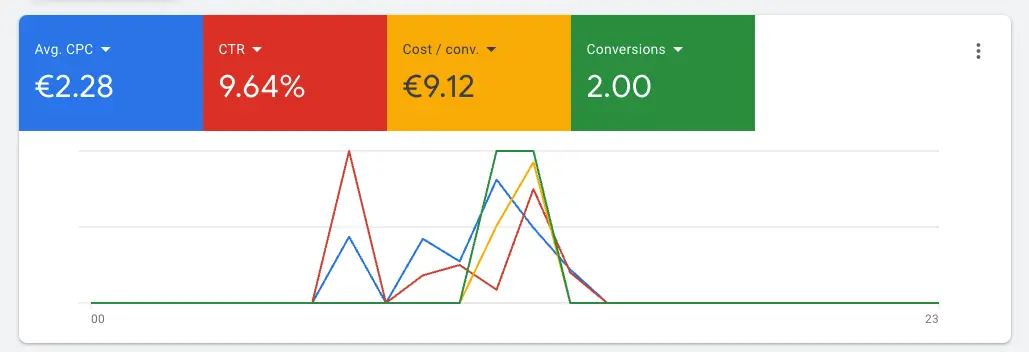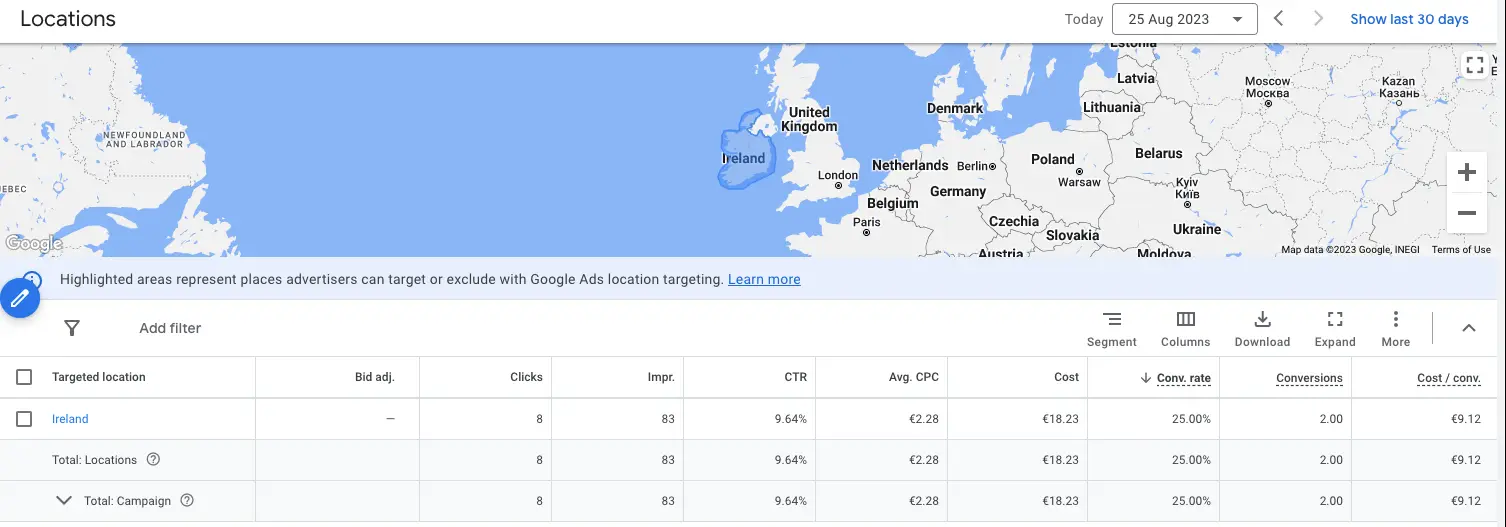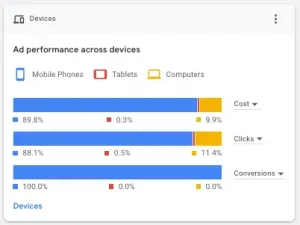
BLOG
Google Ads – All you need to know about
Crafting a successful Google Ads strategy involves a combination of research, planning, execution, and continuous optimization. Here’s a general framework for creating an effective Google Ads strategy: Define Your Goals Clearly outline your objectives. Whether it’s increasing website traffic, driving sales, generating leads, or building brand awareness, your goals will shape the rest of your […]
Crafting a successful Google Ads strategy involves a combination of research, planning, execution, and continuous optimization.
Here’s a general framework for creating an effective Google Ads strategy:
Define Your Goals
Clearly outline your objectives. Whether it’s increasing website traffic, driving sales, generating leads, or building brand awareness, your goals will shape the rest of your strategy.
Know Your Audience
Understand your target audience’s demographics, interests, behaviours, and pain points. This will help you tailor your ads and messaging to resonate with them.
Keyword Research
Identify relevant keywords that potential customers might use to search for your products or services. Tools like Google Keyword Planner can help you find high-traffic, relevant keywords.
Campaign Structure
Organize your campaigns into logical groups based on products, services, or themes. Within each campaign, create ad groups focused on specific sets of related keywords.
Compelling Ad Copy
Craft concise and engaging ad copy that highlights your unique selling points and includes relevant keywords. Address the pain points or needs of your audience and provide a clear call to action.
Landing Pages
Ensure that your ads lead to relevant, optimized landing pages that match the user’s intent. The landing pages should have a clear and compelling call to action and provide a seamless user experience.
Bidding Strategy
Choose a bidding strategy that aligns with your goals. Google Ads offers various options, such as manual CPC, automated bidding, target CPA, and target ROAS. Select the one that suits your objectives.
Ad Extensions
Utilize ad extensions to provide additional information, such as site links, callouts, and structured snippets. These extensions enhance your ad’s visibility and provide more value to potential customers.
Negative Keywords
Exclude irrelevant or low-converting keywords as negative keywords to ensure your ads aren’t shown for unrelated searches. This helps improve your ad’s relevance and click-through rates.
Tracking and Analytics
Set up conversion tracking to measure the effectiveness of your campaigns. Use Google Analytics to gain insights into user behaviour on your website and refine your strategy accordingly.

A/B Testing
Continuously test different ad variations, headlines, descriptions, and landing pages to identify what resonates best with your audience. Make data-driven decisions to optimize your campaigns.
Budget Allocation
Allocate your budget based on campaign performance and priorities. Focus more resources on campaigns that generate better results and consider seasonal trends.
Geotargeting and Device Targeting
Customize your targeting settings to show your ads to users in specific geographic locations or on certain devices. This ensures your ads reach the most relevant audience.
Regular Optimization
Regularly review and optimize your campaigns. Adjust bids, refine ad copy, add negative keywords, and make strategic changes based on performance data.
Monitor Competitors
Keep an eye on your competitors’ strategies and adjust your approach as needed. Stay up-to-date with industry trends and adapt your campaigns accordingly.
Quality Score Improvement
Aim to improve your ad’s Quality Score by focusing on relevance, click-through rates, and landing page experience. A higher Quality Score can lead to better ad placement and lower costs.
Stay Updated
Google Ads is constantly evolving. Stay informed about new features, updates, and best practices to ensure your strategy remains effective.
Remember, a successful Google Ads strategy is not a one-size-fits-all approach. It requires continuous monitoring, learning from data, and adapting to changes in your market and audience behaviour.
What type of campaign should be used?
The type of campaign you should use in Google Ads depends on your specific business goals and the nature of your products or services. Google Ads offers several campaign types, each designed to achieve different objectives. Here are some common campaign types and when to use them:
Search Campaigns
Use when you want to show text ads to users who are actively searching for specific keywords related to your products or services. Search campaigns are great for driving targeted traffic and capturing high-intent leads.
Display Campaigns
Choose display campaigns when you want to reach a broader audience across Google’s network of partner websites. These campaigns use visual ads (banners, images, videos) and are effective for brand awareness and remarketing.
Video Campaigns
Opt for video campaigns when you have compelling video content to showcase. Video ads can be displayed on YouTube and across Google’s video partner sites. They’re excellent for brand storytelling and engagement.
Shopping Campaigns
If you’re an e-commerce business, shopping campaigns are ideal. These campaigns display your product images, prices, and descriptions directly in search results, making it easy for users to compare and shop.
App Campaigns
App campaigns are designed to promote mobile apps across Google’s platforms, including search, display, YouTube, and the Google Play Store. Use these campaigns if you’re looking to drive app installs and engagement.
Discovery Campaigns
Discovery campaigns reach users across multiple Google platforms with visually engaging ads. They are good for introducing new products or services to a wider audience.
Smart Campaigns
Smart campaigns are suitable for small businesses or those new to Google Ads. They use automation to simplify the campaign setup process and are designed to achieve goals like website visits, calls, and app installs.
Local Campaigns
If you have a physical store and want to drive foot traffic, local campaigns are designed for that purpose. They combine ads across various Google platforms to promote your store locally.
Responsive Display Ads
These ads automatically adjust their size, appearance, and format to fit various ad spaces on the Google Display Network. They are suitable for broader brand awareness campaigns.
Call-Only Campaigns
Use these campaigns when your primary goal is to drive phone calls to your business. They display only your phone number and a call button on mobile devices.
To choose the right campaign type, consider your marketing goals, target audience, budget, and available assets (like text, images, and videos). Often, a combination of campaign types can work synergistically to achieve a comprehensive marketing strategy. Regularly monitor and optimize your campaigns to ensure they’re performing according to your objectives.
What is the appropriate budget depending on company size?
The appropriate budget for a Google Ads campaign can vary widely based on several factors, including the size of the company, industry, competition, campaign goals, and target audience. Here’s a general guideline for different company sizes:
Small Businesses or Startups
For smaller businesses with limited budgets, it’s recommended to start with a conservative budget. This could range from $500 to $1,000 per month initially. Focus on highly targeted campaigns and optimize for specific objectives like website visits, leads, or sales.
Medium-Sized Businesses
Medium-sized businesses can allocate a larger budget, typically ranging from $1,000 to $5,000 per month or more. With this budget, you can run multiple campaigns, test different strategies, and have room for both brand awareness and direct response campaigns.
Large Corporations
Larger corporations can allocate substantial budgets to Google Ads, often ranging from $5,000 to several tens of thousands of dollars per month. With a larger budget, you can run multiple campaigns across various platforms, test advanced strategies, and invest in more competitive industries.
Remember that these are just general guidelines, and the actual budget you should allocate depends on various factors:
- Competition
Highly competitive industries require larger budgets to stay visible and competitive. - Campaign Goals
Campaigns with different objectives (awareness, clicks, conversions) require varying budget allocations. - Geographic Reach
Targeting a larger geographic area might necessitate a higher budget. - Keywords
More competitive keywords might demand a higher cost-per-click (CPC), affecting your budget. - Conversion Value
Consider the value of a conversion to your business. A higher value might justify a larger budget. - Testing and Optimization
The budget should also allow for testing different strategies and optimizing campaigns based on data.
Regardless of your company size, it’s essential to approach budget allocation with a strategic mindset. Start with a budget that’s manageable for your business and gradually increase it as you gather data and refine your campaigns. Continuously monitor the performance of your campaigns and adjust your budget allocation based on the results you’re achieving. The goal is to find the sweet spot where your budget generates a positive return on investment (ROI).
*********************
Maximize your advertising budget with Matrix Internet’s expert PPC ads management services. Our team focuses on creating high-performing campaigns that deliver measurable results. Get in touch with Matrix Internet to enhance your online marketing strategy!







